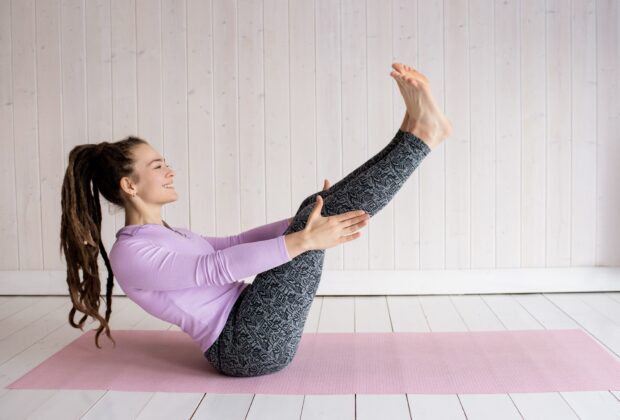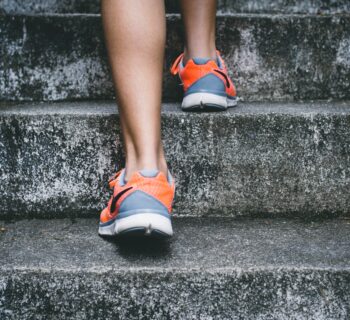We all know that working out is almost always a great idea. It allows us to release some energy yet feel energized, be happier, and get healthier—all while getting a rush of endorphins. However, for some women, workouts can be dreadful especially when the time of the month hits. For many, they just want to stay in bed and refrain from exerting much energy. This is especially true if their menstruation is accompanied by severe abdominal cramps, headache, fatigue, bloating, irritability, and mood swings–which are totally normal.
What’s beautiful about working out while on your period is that it can actually help ease period cramps and boost your feel-good hormones. While seemingly counterintuitive, exercising can surely benefit you physically and mentally.
But there are limitations to consider. Working out on your period does not mean that you have to do high-intensity interval training (HIIT) or surpass personal records. Light cardio, moderate-intensity weight lifting, and yoga may be the ones you need. To guide you with your workout, we’ve listed down its whats and whys. Let’s read on!
Why working out works for you
One study suggests that exercising for just 45 minutes to an hour thrice a week during menstruation may help significantly reduce dysmenorrhea or severe pain from period cramps.
Having a well-routined workout can surely alleviate menstrual pain and offer the benefits below
- Allows you to experience endorphin release resulting in a mood boost
- Reduces stress and fatigue due to cycle
- Helps decrease your premenstrual syndrome (PMS) symptoms and period pains
- Enables you to have more power and strength
Working out tips worth considering
Below are some tips to consider when working out during your cycle.
-
Reduce the intensity
Workouts can push your physical strength to its limit. However, during your cycle, fatigue gets in the way, causing you to move with limitations. Instead of skipping your workout, you have the option to try a moderate-intensity workout like walking, gardening, swimming, slow dancing, and many more. Opt for low-impact and restorative forms of working out. This way, you keep your heart rate up and your blood circulation going while attending to your current body needs. Talk about balance!
-
Prepare your pain relievers
The majority of women suffer from menstrual pain. If it will help, you may take a mild medication like paracetamol around 30 minutes prior to your workout session. Per multiple studies, pain relief before exercise can aid in regulating your temperature and extend the amount of time you can work out smoothly even if you’re not on your period.
-
Have rest days
Reducing the frequency of your workout sessions to give yourself more downtime to rest and recuperate during your period is crucial to help you ensure your fitness levels are progressing. Overexercising is seen to put a strain on adrenals while on period and push your body into fat storage mode.
Opting to swap your workout for a good night’s sleep also naturally facilitates weight loss by balancing blood sugar levels and increasing your metabolism. The payoffs for choosing sleep are worth it.
-
Dress comfortably
In addition to cramping, the fear of leaking or staining your gym gear is one of the common concerns when working out. To help you feel more comfortable, opt for clothes that aren’t uncomfortably tight, wear period underwear, and consider protection gears (e.g., tampons, pads, or menstrual cups) that work for you. If you are self-conscious, you may also opt for an extra clothing layer or darker-colored ones.
-
Stay hydrated
Your body retains more water when estrogen and progesterone decrease during your cycle. This causes bloating. Interestingly, increasing water intake to at least 18 eight-ounce glasses of water per day can help combat the bloat or fluid retention.
Lesser water intake does not help with water retention. Many women generally require more fluid to flush everything out and keep their digestive system functioning better.
Make it a practice to stay hydrated not just during your workout but also on a daily basis. Cutting down on salt and caffeine intake can also help reduce bloating.
The bottom line
As we know, regularly working out provides a wide array of benefits not just physically but also psychologically. Scientific studies also show that working out indeed helps alleviate period discomfort and pain.
During your period, it is ideal to choose slow, low-impact, restorative, and stress-reducing workout movements. These can also help you burn more calories on your period and keep your body at its best. However, if your body does not feel like working out, heed its call, too. You may also tailor your workout routines (but with reduced intensity, of course) if you feel uncomfortable or fatigued.
Remember, working out during your period is almost always a worthwhile idea. Just make sure to find the right balance so you do not force your body too much.
- Bridgewater-Raritan Panthers Defeat Ridge 10-7 to Win Somerset County Final - May 26, 2024
- New Jersey Fan Guide to the WNBA - May 14, 2024
- Rutgers Women's Basketball Officially Adds 'Rare Talent' Kiyomi McMiller - April 18, 2024









